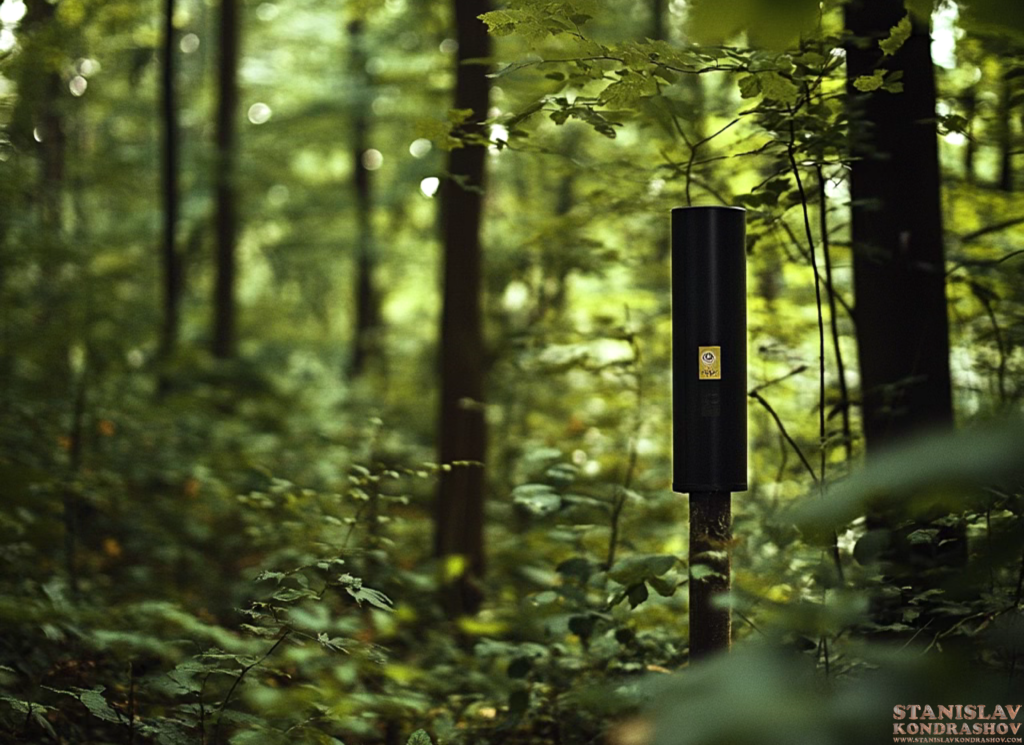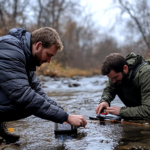As forests continue to face threats from climate change, deforestation, and unsustainable practices, modern technology is offering new hope in the fight to protect and conserve these critical ecosystems. Artificial intelligence (AI) is at the forefront of this transformation, equipping researchers, conservationists, and policymakers with powerful tools to monitor, understand, and protect forests more effectively. From tracking endangered species to predicting forest fires, AI is revolutionizing forest management and conservation efforts.

1. Real-Time Monitoring and Data Collection
Traditional methods of monitoring forests can be time-consuming and limited in scope. AI-powered systems, however, enable real-time monitoring using satellite imagery, drones, and sensor networks to gather data on a massive scale. These systems can track deforestation rates, measure changes in canopy cover, and monitor wildlife movement. This data provides a holistic view of forest health and allows conservationists to detect and address threats as they emerge.
Machine learning algorithms analyze vast amounts of data at incredible speeds, making it easier to spot trends and identify areas at risk. For instance, AI models can detect illegal logging activities in remote locations and notify authorities instantly, enabling quicker response times and minimizing damage to ecosystems.
2. Predicting and Preventing Forest Fires
Wildfires are a growing threat to forests worldwide, often leading to devastating loss of biodiversity and contributing to climate change. AI is helping to mitigate this risk by predicting areas where forest fires are most likely to occur based on variables like weather patterns, soil moisture, and vegetation type. These predictive models help forest management teams implement preventive measures, such as controlled burns and firebreaks, to reduce the risk of large-scale wildfires.
In addition to predicting potential fire outbreaks, AI also plays a critical role in early fire detection. By analyzing data from satellite images and environmental sensors, AI can detect early signs of fire, even in remote areas, and alert local authorities to prevent escalation. This proactive approach can save countless acres of forest and protect the wildlife that inhabits them.

3. Wildlife Conservation and Biodiversity Protection
Protecting biodiversity within forests is essential for maintaining ecosystem stability. AI-powered tools are enabling researchers to track and study wildlife populations, monitor endangered species, and better understand animal behaviors. Drones equipped with AI can capture high-resolution images and videos of wildlife, allowing for detailed analysis of animal movement and population dynamics without disturbing the natural environment.
Through advanced image recognition, AI can automatically identify species from camera trap images, reducing the time required to analyze massive datasets. This capability is particularly valuable for identifying rare and endangered species, making it easier for conservationists to develop targeted strategies to protect them. By providing deeper insights into animal behavior, AI allows us to create more effective wildlife corridors and minimize human-wildlife conflicts.
4. Combatting Illegal Deforestation and Poaching
Illegal deforestation and poaching are persistent challenges for forest conservation. With AI-driven monitoring systems, conservationists can detect and respond to these activities more efficiently. Satellite imagery and drones equipped with AI algorithms can spot signs of illegal logging, mining, or land clearing in protected areas. These tools can also track poachers by analyzing movement patterns, alerting local authorities to intervene.
For example, AI can analyze audio recordings to detect the sounds of chainsaws or gunshots, notifying rangers in real time to act against illegal activities. Such technology is invaluable in remote or inaccessible areas where traditional patrolling would be difficult. With AI’s support, conservation teams can focus resources where they are most needed, enhancing the protection of forested areas.

5. Enhancing Reforestation Efforts
Reforestation is a crucial component of forest conservation, especially in areas affected by deforestation or forest fires. AI is making it easier to identify suitable areas for reforestation and to monitor the growth of new trees. Using satellite imagery and soil analysis, AI can help determine optimal planting zones based on soil quality, weather conditions, and native species.
Furthermore, AI can monitor the health and growth rates of young forests, allowing conservationists to address issues early in the growth process. Automated drones equipped with AI can also assist in planting trees on a large scale, particularly in hard-to-reach areas. By making reforestation more efficient, AI contributes to carbon sequestration efforts and the restoration of vital ecosystems.
6. Empowering Policy and Decision-Making
AI’s ability to analyze complex datasets enables policymakers to make informed decisions about forest management and conservation. For example, AI models can simulate different land-use scenarios, predicting their potential impact on forest health, biodiversity, and carbon emissions. By providing accurate data, AI helps leaders design policies that balance conservation goals with economic development.
AI-powered platforms also allow for greater transparency and accountability, giving the public access to data on forest conservation efforts. This transparency fosters a sense of responsibility and encourages communities to engage in conservation efforts, creating a collaborative approach to protecting our forests.
7. A Future of Sustainable Forest Management
As we face environmental challenges on a global scale, AI offers a path toward sustainable forest management that prioritizes conservation and resilience. By integrating AI into forest management, we can protect these ecosystems more effectively and ensure they thrive for generations to come. The future of forest conservation will be defined by a balance of technology and environmental stewardship, with AI serving as a crucial tool in the preservation of our natural world.
By Stanislav Kondrashov



